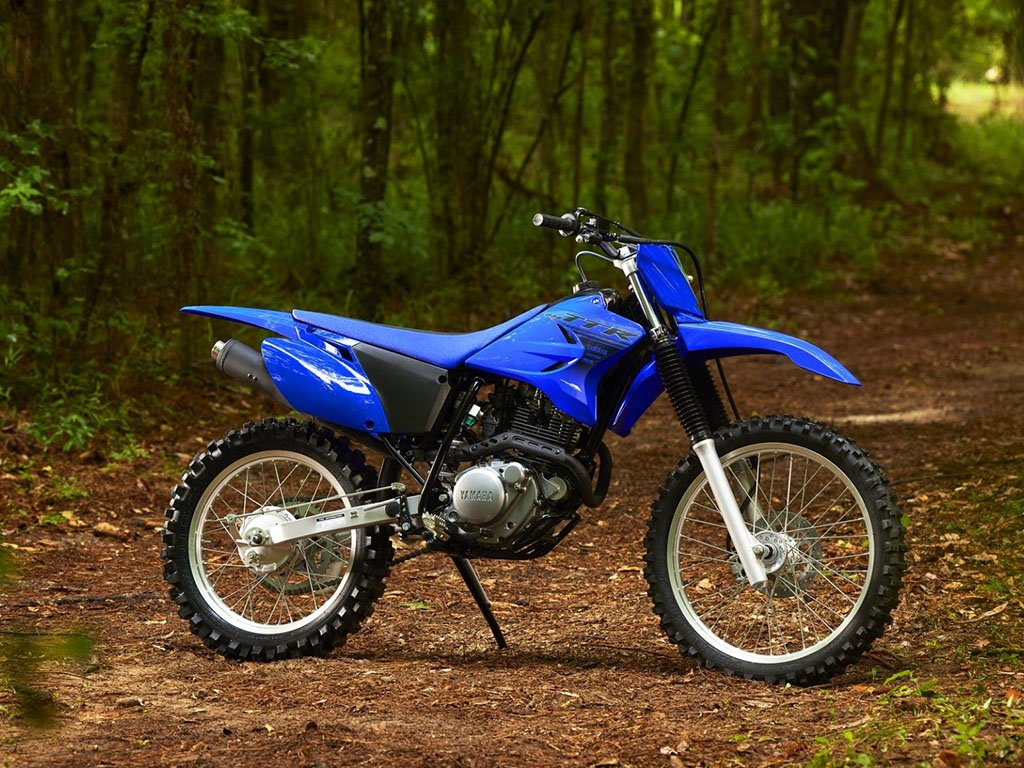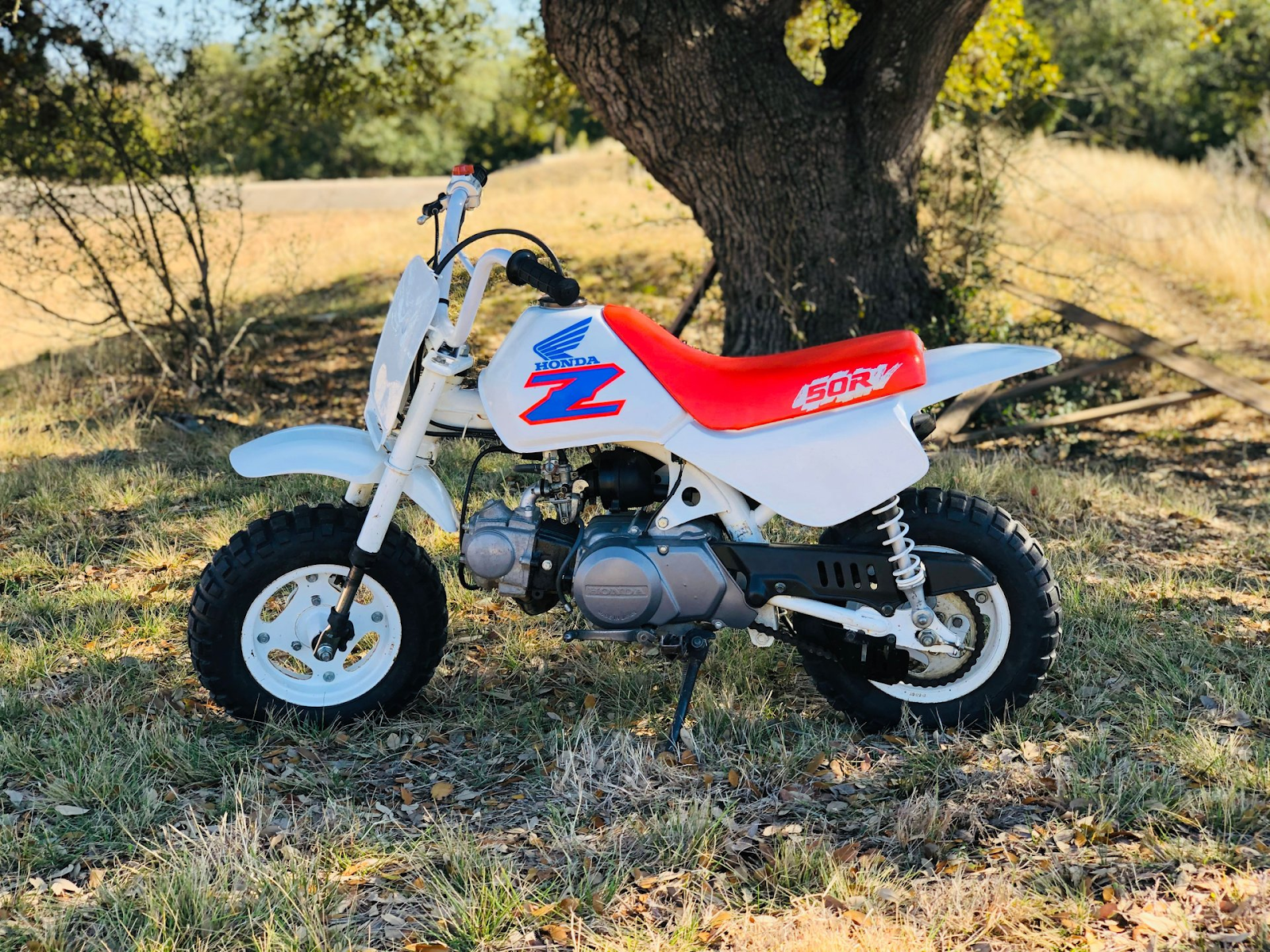Find Your Bike (Part 2)
Hello
again and welcome back to my blog on choosing the right dirt bike. Last time we
talked about the sizing of different models and why it is important. We also
got into the different types of dirt bikes, and their intended use. Today we will
take a closer look at those types, listing some models for examples and going
over their specifications.
We’ll
also get into pricing these bikes, as that will always have a role in what you
decide to purchase.
Engine Types
There
are multiples factors that are going to determine what the engine of the bike
is designed to do. Some of the main specifications you will be looking at will
be the cc’s of an engine, Horsepower (HP), Torque, and if it is four-stroke or two-stroke.
CC
stands for cubic centimeters and is used to show engine size. The more cc’s,
the larger that engine. You’ll want to look at a bike’s HP and Torque output
numbers to get an idea of its real power.
Think
of Torque as how quickly the bike accelerates. When you pull back the throttle,
how quickly that power is delivered.
Think
of Horsepower as the limit of speed that the bike can reach, while also being
able to maintain that speed.
Another
identifier of how an engine will deliver its power is if it is two-stroke or
four-stroke. While two-strokes have been gently phasing out since the early
2000’s (due to emission regulations), they’re still being sold by certain
manufacturers, and you can still find them on the private market. These will be
easy to spot by large header pipes coming from the engine. They also have a
very distinct sound, often described as sounding like braaap-braaap.
Four-Stroke
Power Delivery
Two-Stroke
dirt bikes are going to have a narrower power band, which means they’ll deliver
the most power in a certain rev range, usually at higher Revolutions Per Minute
(RPM).
Four-Strokes
bikes are going to have a more linear power delivery, which means usable power
throughout the RPM range.
Power
delivery is also going to look different based on what type of bike you ride. MX
and Enduro race bikes are going to have higher HP and Torque numbers, with the
goal of speed in mind. Trail bikes and Dual-Sports are going to have lower HP
and Torque numbers, instead focusing on comfort and practicality.
|
|
Average HP |
Average Torque |
|
MX
450cc |
57 |
34 lb-ft |
|
MX
250cc |
40 |
19 lb-ft |
|
Trail230-250cc |
19 |
15 lb-ft |
|
KLX
300r |
33 |
19 lb-ft |
(I
added the Kawasaki 300r because I think it is a good mix of being comfortable while
still having good power delivery.)
Power
delivery is going to be important to think about when choosing your bike. If
you’re going to spend your time at a racetrack, an MX bike will have the power
you’re looking for. If you just want to get out in the woods and go at your own
pace, then a trail bike is going to have a little less power but be more
comfortable and provide a smoother ride.
Theres
an old saying when it comes to motorcycles, “I’d rather ride a slow bike fast,
than a fast bike slow”. I think that saying rings true with dirt bikes as well.
I grew up riding the fastest dirt bikes I could get my hands on, I rode them on
racetracks, through the woods, and even on the roads. Now that I am a little
older I have more fun squeezing the most power out of a bike with less power, because
doing that on race bikes is much more dangerous.
Fuel Injection vs Carburetors
I
just want to add a quick note about fuel injection vs carburetors. Most new
bikes nowadays are going to be fuel injected, this supplies the fuel directly
into the intake, eliminating the need for a carburetor.
Some
trail bikes however will still come carbureted, like the 2024 Yamaha TTR 230. Carbureted
bikes will get the job done no problem, but you will notice some differences
from a fuel injected bike.
Carbureted
bikes will have a slight delay between pulling the throttle and receiving power,
the power delivery won’t be as quick as a fuel injected bike. Carburetors also
require that you remove and clean the carburetor if you leave the bike sitting
for more than a few weeks. They will still be very reliable, and this shouldn’t
scare you, it just means a little more deliberation in the care of your bike.
Maintenance
Maintenance
is another category that is going to vary depending on the type of bike you
want. Typical bike maintenance is going to be small things like oil and oil
filter changes, air filter cleaning, tire pressure checks, chain lubricating, and
checking fluid levels like oil and coolant. These are some of the smaller
maintenance checks that you can do without much mechanical experience.
MX
bikes that are meant to race are going to require maintenance more often, as
you’re putting more strain on the bike. Oil changes for MX bikes are going to need
to be made around every 15 hours. And the engine itself is going to need a
rebuild done around every 30 hours, depending on how often and how long you are
racing it.
Trail
bikes are going to be much easier to take care of. With oil change intervals
being closer to around 30 hours.
Basically,
shorter maintenance intervals are going to require more time and money dedicated
to your bike. Which is why knowing this information will be important to your decision.
What Makes A Bike Easy?
You’ve
probably heard me talk about some bikes being easier to ride, but what does
that mean? When I speak about the difficulties that a certain bike can bring, I’m
talking about multiple factors. Power delivery, clutch pull, suspension
stiffness, these are all things that shape how a bike can be easy or hard to
ride.
MX
bikes make racing more fun, they’re faster, they corner better, and they’re louder.
But on a trail those things can bring you pain. If you try and ride these bikes
slow, they can stall out, which shuts the motor off. This can put you in a
dangerous situation if you’re on a hill or have other riders behind you. You’ll
also quickly realize that the seat is NOT built for comfort, and the power delivery
can have you pulling too much of the throttle and crashing.
This
is what I mean when I say a bike is forgiving for new riders. If you make a
mistake and pull too much throttle on an MX bike, you could easily wipe out.
But Trail bikes can provide a safer and more comfortable experience for you to
learn and make the occasional mistake.
Pricing
Here’s
a category that played a huge role in my last dirt bike purchase. Being new to
this world, you will quickly find out that dirt bikes are not as cheap as you
thought they were. New MX models like the Kawasaki KX450 start with an MSRP of
$10,399, and an out the door price at a dealership will be closer to $11,500.
Some
brands and models are going to be even more expensive than that. My advice is
to try and find a used bike. Take a look at some pre-owned bikes at a
dealership or even on Facebook Marketplace. It’s going to be worth it to look around
and compare models and prices.
If
you’re new to riding it’s very possible that you’re going to drop your bike at
some point, and you’re going to feel a lot better about it being used than if
it was brand new.
|
Class |
Average MSRP |
Private Seller Range |
|
MX – 450cc |
$9,500 - $11,000 |
$4,500 - $9,000 |
|
MX – 250cc |
$7,500 - $9,600 |
$2,500 - $6,500 |
|
Trail 230-250cc |
$4,400 - $5,100 |
$2,000 - $4,000 |
|
KLX 300r |
$6,100 |
$3,800 – $5,500 |
Quick
reminder that these ranges could vary depending on where you live. And if you don’t
mind older bikes these used prices could drop a lot.
Plain
and simple, MX or any bikes meant to race are going to cost more than Trail
Bikes and Dual-Sports. As I mentioned earlier, this wasn’t the only factor in
my own purchase, but it was an important one.
Good Beginner Bikes
Before
we leave, I’m going to leave you with some great beginner bikes and list a couple
of their highlights. Keep in mind I’ll be comparing these bikes against each
other, so I’ll try and pick what stands out for each.
Some
of these bikes are really similar, but I want to give you an idea of what each
bike could bring.
Pros Include...
·
Most affordable bike on the list
·
Lowest seat at 31”, better for shorter riders
· Very Lightweight
Cons include...
·
Less power than the other bikes on this list
·
Carbureted
The next two bikes are going to be in a group together because they are very similar. The only key difference is that the KLX230r is fuel injected, so if that is a big deal for you, you’ll want to go with the Kawasaki.
Kawasaki KLX 230r
Pros of these bikes include...
·
More power than the 140 class
·
More suspension travel, so it handles bumps and
jumps better
·
Higher seat and ground clearance
·
Fuel Injection for the Kawasaki (Green)
(Not to be confused
with the CRF250R)
·
Slightly larger engine size for power
·
Fuel Injection
·
Comfortable rider triangle
Kawasaki KLX 300R (My
Choice)
Some of the pros include
·
Highest HP and Torque in the category
·
Fuel Injection
· Largest frame, ground clearance, and suspension travel in the category
Some cons include
·
Highest price point of the group
·
The power output could be intimidating
·
Heaviest bike in the category
Honestly, all of these are great bikes, and you could have a
ton of fun on any of them. It could really just come down to what color you
like and which one you think looks the best. (I’ve always been a fan of the
Kawasaki green). It’s going to be your bike, so try not to get too caught up in
the numbers and brands and do what’s going to be best for you.
I hope these blogs have given you some valuable information as
you enter the world of dirt bikes. I sincerely hope that I have helped you with
your decision. This has been a passion of mine for a long time, and I could talk
about these bikes until I’m blue in the face. Look at those options, do some
research, and please contact me if you want more information or even just want
to talk bikes.
Be safe out there and most importantly, have fun!
Cameron Elkins
Prime Time Off-Road Company
celkins4@gmail.com



























